CONTEMPORARY ART WITH PETER TRIANTOS | E036 PODCAST
LISTEN TO THIS EPISODE
ABOUT THE GUEST
Peter Triantos is a prominent contemporary abstract artist, known for his vibrant and joyful artworks. Born in a small village in the mountains of Greece, he immigrated to Canada with his family at the age of five. His journey as an artist has been marked by his unique approach to painting and his ability to capture raw emotion and energy on canvas.
Triantos is celebrated for several notable series, including the "Jelly Bean Series" and the "Napa Valley Series." The "Jelly Bean Series" is particularly famous for its exuberant use of color and has become a signature of his work, often described as bringing immediate emotional joy to viewers. His "Napa Valley Series" captures the essence of nature and is appreciated for its dynamic, expressive style.
His artworks are featured in high-end residential and corporate spaces across North America, Europe, and Asia, making him a sought-after artist for both private collectors and large corporations. Triantos’s philosophy revolves around the idea that art should be a source of joy and passion, which is evident in his pieces that exude a sense of wonder and positivity.
Moreover, Triantos is also known for his humanitarian efforts, often donating his art to various charitable causes. His vibrant approach to both art and life, combined with his philanthropic activities, has cemented his relevance and popularity in the contemporary art world.
Peter’s Instagram:
https://www.instagram.com/petertriantos/?hl=en
Peter’s YouTube:
https://www.youtube.com/channel/UC1b1DVJ8TABvN6R8NA87-Dw
Peter’s LinkedIn:
https://www.linkedin.com/in/petertriantos/?originalSubdomain=ca
Peter’s Twitter (X):
https://x.com/ptriantosart?lang=en
Peter’s Website:
https://petertriantos.com/
George Stroumboulis sits down with Peter Triantos in Toronto, Canada on the Invigorate Your Business Podcast to talk about all things art, galleries, creative inspiration, the art business and being one of Canada’s top contemporary artists.
“An art collector is somebody that gives something a chance and then they look at it and they’re kind of non-rigid. And that’s why you see a lot of successful people, and maybe there’s a reason for it because they’re non-rigid. ”
MEDIA RELATED TO THE EPISODE
George Stroumboulis sits down with Peter Triantos in Toronto, Canada on the Invigorate Your Business Podcast to talk about all things art, galleries, creative inspiration, the art business and being one of Canada’s top contemporary artists.
George Stroumboulis sits down with Peter Triantos in Toronto, Canada on the Invigorate Your Business Podcast to talk about all things art, galleries, creative inspiration, the art business and being one of Canada’s top contemporary artists.
George Stroumboulis sits down with Peter Triantos in Toronto, Canada on the Invigorate Your Business Podcast to talk about all things art, galleries, creative inspiration, the art business and being one of Canada’s top contemporary artists.
George Stroumboulis sits down with Peter Triantos in Toronto, Canada on the Invigorate Your Business Podcast to talk about all things art, galleries, creative inspiration, the art business and being one of Canada’s top contemporary artists.
George Stroumboulis sits down with Peter Triantos in Toronto, Canada on the Invigorate Your Business Podcast to talk about all things art, galleries, creative inspiration, the art business and being one of Canada’s top contemporary artists.
George Stroumboulis sits down with Peter Triantos in Toronto, Canada on the Invigorate Your Business Podcast to talk about all things art, galleries, creative inspiration, the art business and being one of Canada’s top contemporary artists.
ABOUT THE “INVIGORATE YOUR BUSINESS” PODCAST
The Invigorate Your Business with George Stroumboulis podcast features casual conversations and personal interviews with business leaders in their respective fields of expertise. Crossing several industry types and personal backgrounds, George sits down with inspiring people to discuss their business, how they got into that business, their path to the top of their game and the trials and tribulations experienced along the way. We want you to get inspired, motivated, and then apply any advice to your personal and professional lives. If there is at least one piece of advice that resonates with you after listening, then this podcast is a success. New episodes weekly. Stream our show on Spotify, YouTube, Apple, Amazon and all other platforms.
ABOUT GEORGE STROUMBOULIS
George Stroumboulis is an entrepreneur to the core, having launched several ventures across multiple industries and international markets. He has held senior-level positions at progressive companies and government institutions, both domestically and internationally, building an extensive portfolio of business know-how over the years and driving profit-generating results. George’s ability to drive real change has landed him in several media outlets, including the front page of the Wall Street Journal. George was born in Toronto, Canada to his Greek immigrant parents. Family first. Flying over 300,000 miles a year around the world puts into perspective how important family is to George’s mental and emotional development. With all this travel to global destinations, the longest he stays even in the most far-out destination is 3 days or less - a personal rule he lives by to make sure he is present and involved in family life with his wife and three daughters. To read about George’s global travels, stay connected with his blog section.
STAY CONNECTED WITH GEORGE STROUMBOULIS
STREAM & LISTEN TO THE PODCAST:
SPOTIFY: https://open.spotify.com/show/1rW2CmxQoiJNEPOZupJlvd
YOUTUBE: https://www.youtube.com/user/Stroumboulis
APPLE iTUNES: https://podcasts.apple.com/us/podcast/invigorate-your-business-with-george-stroumboulis/id1607693240
AMAZON MUSIC: https://music.amazon.com/podcasts/8fc03929-71b3-483a-a64e-153e30b3d462/invigorate-your-business-with-george-stroumboulis
STROUMBOULIS SITE: https://www.stroumboulis.com/podcast
PODCAST SITE: http://www.invigorateyourbusiness.com
FOLLOW GEORGE STROUMBOULIS:
INSTAGRAM: https://www.instagram.com/georgestroumboulis/
YOUTUBE: https://www.youtube.com/user/Stroumboulis
LINKEDIN: https://www.linkedin.com/in/Stroumboulis/
TWITTER: https://twitter.com/Stroumboulis
FACEBOOK: https://www.facebook.com/georgestroumboulis
TIKTOK: https://www.tiktok.com/@georgestroumboulis
CONTACT GEORGE DIRECTLY: https://www.stroumboulis.com/connect
FULL SHOW TRANSCRIPT
George Stroumboulis - Host: 00:00
This episode of Invigorate your Business with George Stroumboulis comes from Toronto, Canada. I get to sit down with Peter Triantos. He has become a cultural icon in Canada for his contemporary artwork. It's featured all around the city, all around the country high-end homes, residential buildings, corporate settings. He has a unique style. He has this intense passion and energy and we're going to get to dive in today and just learn about everything related to art, artwork, what it means to have a gallery, how that whole side of the business works. Very fortunate to be sitting down with them. So enjoy this episode starting now. My name is George Stroumboulis and I'm extremely passionate about traveling the world, meeting new people and learning about new businesses. Join me as I sit down with other entrepreneurs to learn about their journeys. This episode of Invigorate your Business starts now, so we're going to jump into this.
01:02
are in Peters, Toronto, Canada, right well, it's everybody's what it's everybody's, but I'm very happy and lucky to be sitting with you. You are a cultural icon in the area people, your name has become synonymous with just art. You know the culture, what you're able to do. This guy's putting me on the spot, right now it's just average guy.
Peter Triantos - Guest: 01:25
I mean, look, you know the culture, what you're able to do. This guy's putting me on the spot right now. Just average guy. I mean, look, you know I'm honored, but just that every day, joe, really peter really every day.
01:36
Peter, who has his artwork just everywhere, right well, the art has been such a you know, going back to, I'm going to probably talk a lot. Let me just say this man, I I can talk enough, so I'm going to talk and tell you. Like from a young kid, probably grade seven, I realized that I was very good at art. Actually, it it started in grade three. I was influenced by a couple of friends I remember their names this guy, Giovanni and Zoran. They were drawing next to me. I had no idea about art. They gave us this huge piece of paper and I was like, and these guys really opened up my eyes. One guy was drawing a Chicago Blackhawks goalie, tony Esposito. Another guy was drawing a landscape and I was just like man, I had found my calling right there.
02:37
And the next couple of weeks it was just like drawing on my pants, little teachers grabbing me and trying to get me away just nonstop, before you know it, by maybe the next month, I was just when you love something, you start to excel at it, because it's like if I don't really like something and you can teach me a hundred times, it just goes in and out, like they say, you know in Greek. I don't want to say that, but Nike's, if you're Nike. It's raining in and out, like they say. You know in greek. I don't want to say that, but nikes, give you nikes painting in and out.
03:08
But uh, so I was, you know, loving the art so much. Even when collecting art, I, I, I retain everything because I love it, right, sure. So the art. I can't say enough of what it's done for me. I mean, I've met prime ministers, people like yourself, great people, great clients, Mike Tyson, Nicole Schrodinger. I did a show with Drake. I was lucky enough. Tate McRae filmed in my studio her album. There's so many people that I couldn't believe Roy Woods. Because of the art, it gave me a voice, that's all so I'm talking right now. It gave me a voice. Absolutely Right, George.
George Stroumboulis - Host: 03:59
But your journey is incredible, right? So your artwork if people don't know, they're going to be Googling, they're going to see, right, and you're going to see that your artwork is incredible. I'm going to visit the gallery tomorrow as well. The studio.
04:10
But you know what? The one thing you do amazing is, aside from the artwork is the social connection. So, without even knowing you, you feel like you know. Peter, you see it, you go to the job sites and you're actually sitting there and installing it on the walls and taking people on that journey. I feel like I'm there through the screen. Right, you do an incredible job like that, thank you. But let me ask you you started so when you were a kid and you started doodling in the third grade. There was a gap of 40 plus years until you took this professional.
Peter Triantos - Guest: 04:38
Yeah, yes. So a couple of gaps, three or four gaps. I mean I went to art school in grade nine. I had to leave because of financial reasons. You know, I was an immigrant. The cost of the equipment just wasn't feasible, so I left. Then I opened a gallery when I was 30 years old and then I went back to construction and then, at 47, I think, I opened one, two, three, four galleries in about a year or so with my wife. So I took the scenic route and I was very happy to take the scenic route. I mean, I wouldn't have it any other way.
05:27
I don't think I was mature enough to have done this in my 20s. I think it takes time to become a better person, a person who understands more. Not that I wasn't a good person as a young kid, but I was a little bit wild and, you know, untamed, and I think age tames you a bit and the art is just a way of me saying hi, I'm Peter Triantos. I want you to enjoy what kind of colors or what image, imaginary, landscape that I'm portraying for you. I'm just trying to make you happy. That's the truth. I'm not, you know, really trying to make a political statement, although it does sometimes sneak in there Sure or a statement, somehow, subconsciously, you know uh you're not.
George Stroumboulis - Host: 06:28
You're not phony and you don't portray that like this. Is you.
Peter Triantos - Guest: 06:31
The artwork comes across the various jobs getting there, so I'm not smart enough to be, phony, you're not smart enough to be talk to me about just the various jobs too.
George Stroumboulis - Host: 06:41
Like we all have passions, right when I was a kid, I want to be a professional soccer player and this and that and you want it. You were drawing and then you realize a certain point, like I'm not going to be this or that. You never stopped realizing that, Right, but you started doing other jobs to pay the bills.
Peter Triantos - Guest: 06:54
I knew, you knew you would be. Oh, I knew like a, like a million percent. Well, I'm not a famous artist, but I always knew that I was going to be a famous, a big artist, like I just knew that I had this Trump card in my back pocket.
07:14
Now you're getting political man In my back pocket and I knew that I would one day just say you know, I would take it out. And so I always felt confident. In any job that I have had, I would walk out instantly, within a second. I never felt I was. I had to, you know, play by anybody's rules if I didn't like it. I just said this is who I am. I am, you know, people knew me as oh, peter is a great artist, peter's a comedian, peter's a joker, he's crazy, peter's crazy, but it was always Peter.
07:51
And art. But I forgot about that for a long time. And you know, I was a carpenter for many years, building homes. But I was drawing on sheet supply, wood man. It brings back memories. You know, up on the roof, guys down in the bottom looking at me drawing a naked woman on the roof and crazy cartoons and stuff.
08:13
So, and I looked at carpentry as a beautiful form of art, building cupolas and car roofs, and art is everywhere. Art is in, you know, the art of even becoming a good person. You know music, the arts the arts are are the highest on the pyramid, george, and that's why kids are drawn to it. I think it's the highest form of intellect, because and that's a great thing about art collectors, yeah, oh, we're very lucky to know them and we've met many great people. But anybody could turn around say, look, I can do that and get nothing from it.
09:00
But an art collector is somebody that gives something a chance and then they look at it and they're kind of non-rigid. And that's why you see a lot of successful people, older people, all kinds of people that collect art, that are usually they have money and maybe there's a reason for it because they're non-rigid, and maybe there's a reason for it because they're non-rigid. I don't think most of the people that we meet are hardworking people, intelligent people, good family people, good people, very good people. That's all I'm going to say. So I see from my collectors you know it's not just, oh, somebody has money. They're usually people that aren't rigid and see something. Maybe they know more about art than you know. Early on I would sell my art and I thought I was taking advantage of people your your art.
George Stroumboulis - Host: 09:55
So when you were an art collector, you were selling other people's art, like when you opened up your first gallery.
Peter Triantos - Guest: 10:00
Yeah, I was selling old masters and then I would sneak my art in there and people started buying my art more and more and I always felt like I was taking advantage of them. And you know, I remember in my 30s I painted this abstract painting. Some guy came in he said how much is that? And I said there's a joke, you know, $7,000. It's a little bit of a long story I don't want to get into, but he ended up buying it on the spot and I I never realized. Uh, you know, I thought I took advantage of him and it took me 25 years to buy it back. I bought it back after years later for like 30,000. So why?
George Stroumboulis - Host: 10:41
why did you buy that?
Peter Triantos - Guest: 10:42
Just because Because it was one of my first large abstract paintings and I think the client knew more about the painting than I did, to be honest with you. So and I'm not kidding about that because you know I thought it was ripping him off kind of. I didn't understand the painting. I had brought my family in the night before to see it my brother, my nieces and I asked them what do you think? And they said well, it's you. And I said what the hell does that even mean? So I was discouraged and that same evening I think it was not even the night before the same evening the gentleman had come in and so when he asked about the painting, I kind of put the high price, just kind of like I thought he was going to kind of make fun of it or whatever.
11:37
You know, because I can paint realism like nobody's, you know, I have a good hand to eye, very good, and if you'll see my early work. But I didn't want to paint like a fan blowing another fan. You know, I see an apple and I paint the Apple. It's just a copy. I wanted to get into abstraction and imaginary world. You know, take from nature but make an imaginary world. You know, take from nature but make an imaginary landscape or an abstract. You know it's fun. Art is a lot of fun and, to be honest with you, I wish I can be painting more. But the business of art, you know, there's many things to do and I can go on forever.
George Stroumboulis - Host: 12:21
Well, I just did the math. Right now, you, even spending time with me today, you're probably losing tens of thousands of dollars. Not not painting out there, right, like let's be honest like we're getting to the commissioning side, but go back to that painting like 50 commissions behind them, but people kind of start to hate me after a while but? But do you lose? Because you're an artist, you're creative. But do you lose when the business side is overwhelming Four galleries like? That's not Mickey Mouse, you're running an operation.
Peter Triantos - Guest: 12:49
Now we have three galleries, four with Giri, but two of those are studios and some other like. I mean, you want to keep it lean and it's a fine line, but you also got to get out there. So I had no idea about PR. I knew that by some weird way that if I put one on Bathurst, I put one on Avenue Road and I put one on, you know, davenport. I started one on Yorkdale. I kind of was like in everybody's face and everybody was saying why do you need so many galleries? But it was working and I think it brought my name up very quickly. Would I recommend it to somebody young? No, I think. If you're not, I think it can hurt you, right, but that're not, I think it can hurt you, right, but that's the way I did it. You know, maybe I didn't know any other way, right, right. But I think you know social media, you know me growing up.
13:59
I remember walking into a gallery trying to talk to a dealer. It was almost impossible. You know. I had one dealer actually tell me how did you get in here? And I kind of said to myself never want to go through this again.
14:15
So years later I opened my own gallery. Did that like fuel you? That fueled me, that put the spark in. Yeah, you know, kind of lit the spark and I ended up having gallery close the next door. So, yeah, you need that spark, you need that kick in the behind. It was shocking to me, but today you don't need a dealer.
14:40
There's Instagram. There's social media where an artist can explode overnight. People will like your work, so I like that. I think people are. There's social media when an artist can explode overnight. People will like your work, so I like that. I think people are afraid of social media. Look, it has its bad things too kind of controlled, but I think it's given a lot of freedom and it's given people like me a type of constant. You know so many great things to look at. You know, I mean, has it sparked my creativity? For sure, early Instagram and that me growing up as a kid. Who my friends, if I you know what was I going to do? Talk about art. Know it was a. It was a little bit weird back then. You know you're an artist. You know it wasn't something that you know. Let's go to the museum. I don't know how am I going to say right?
15:34
they're probably going to want to fight you if they're talking about that so yeah, kind of weird to say times have changed, right, but but you know I was painting Conan the Barbarian and you know crazy scenes and stuff like that, right, what I'm painting today is different and hopefully what I'm painting in the next five years or three years or ten years is going to be even more different. I don't want to be doing the same thing over and over, right, you don't eat the same thing every day. Doing the same thing over and over, right, you don't eat the same thing every day. So you, I paint different series so many different series.
George Stroumboulis - Host: 16:11
What's the fine line on that? So, like, you're painting right now you're known for the jelly bean series, right, which is just fresh, it pops. It's known around the city. You do other amazing abstract stuff. Like I've always wondered you all you need is a canvas paint and you can earn money. Like I'm not trying to simple it, but like literally it's up to you on, like, how many hours in the day you can do that? Not everyone can do that. Like, if I want to, well, everybody could do it, because, but sorry, not everyone. Like for me, if I want to sell more lighting, I can't just lock myself in a room. Like I need to find a market. Like you've created such a brand for yourself where it's like how much, I'm sure, how many commissionings you have behind you, it's up to you. But at what point, like, do you keep fueling your fire? You know what I mean. Like, if you're just doing, the same thing.
Peter Triantos - Guest: 16:57
Yeah, beautiful question. Like I mean that's a very good question. I mean, you know I'm producing currency, but you know, being truthful, like you know, there's times where I stop the series. You know, like I would do black and white paintings. They would sell out, so I kind of would get away from them. I stopped the Jelly Bean series for a while, I stopped the Napa Valley series for a while and then go go back to it.
17:28
I mean, you know money is important but you know you have to keep the, the passion alive and and you have to kind of enjoy your own art. Like I said before to some of my clients that I wouldn't hang every painting I made in my home, like and they take that in a, you know, weird way, but that's the truth like every painting is not a masterpiece and if you're looking to make a masterpiece, you'll never make one. The thing is to constantly work and perfect your craft. It's like making a meal or or working on proper lighting. You always learn. You're learning every day, right, right, absolutely. So you know one good thing about art you can do it until you're late to years, and that's one thing I kind of loved about art is that as a kid that I would see artists in their later years and they're still creating.
18:25
And Picasso in the 60s, his work, if you look at it, it's sensational. Here he is in the 60s and the vibrance and the passion, the colors, 60s works are very, very unique, beautiful works. And here's a guy who's in the 70ss I think in the 60s, right, so it gives you, you know, hope. Like you know, you're a hockey player, soccer player. You mentioned soccer. We had some soccer player come. You know Greek soccer player, euro Cup caragoonis got a goodagounis.
George Stroumboulis - Host: 19:04
He was at my studio.
Peter Triantos - Guest: 19:05
That was like legend dude Like here's a guy I idolized, you know, euro Cup and because of art. Yeah, so I mean, you know you're a soccer player, you're retired at what? 34, 35. Hockey players, 40 years old, whatever, right, yeah, and with the art it's like you can go on until the later years of your life and I love that. Yes, because it's a throwaway world. You know, people have that generation gap. I'm 20 years old, you're 30 year old. I'm 20, you 40, you're finished.
19:44
But the art is relative to these kids and I love helping, like I was in Korea. You know, somebody said to me what are you going to do in Korea? I said, well, if I could change a kid's you know mind to doing something that he loves, I'd be happy. And he said well, you're arrogant. I said what do you mean? He said you're arrogant. Who are you going to change people's lives? I didn't realize what he meant by that. I was kind of offended. I wasn't arrogant, but we went to Korea and we changed many kids' lives. We got letters and kids that saw me paint live and you know I had no blueprint doing some lunatic work and they came alive.
George Stroumboulis - Host: 20:29
So that's what I want to do.
Peter Triantos - Guest: 20:30
I want to be an artist like him. I don't want to be a doctor. I don't want to be a dentist. I'm not cutting down A doctor, by the way. I need a dentist. I broke my tooth recently.
George Stroumboulis - Host: 20:39
Is there a good story behind that or not?
Peter Triantos - Guest: 20:41
Well, not really not really okay, it's broke, uh, but so you know, art is is a magical magic. It's, it's from, it's, it's the most humane. You know, you can go back to the days where you know people are blowing pigment through their fingers onto a cave wall saying I was here. So you know, that's the same thing today with the graffiti guy I was here, it's the same thing what I'm doing. I'm here, so I'm going to try to. You know, show you. I think artists just really want, um, they want recognition.
21:19
Everybody does everyone, every person does, whether it's an actor, you know, know, nobody wants to say you know you were really bad in that film, well, I don't really care. Deep down, you're going to care, you're going to try to. What did I do wrong? Like sure you're going to be yourself. But deep down, you want accolades for your work. You want somebody to say wow, I really like that, work like I I walked into uh restaurants.
21:46
Like I meet a lot of people that recognize me. You know, uh, but I I was in yorkville one time and this young kid came up to me.
21:56
You know, 10 years old and he recognized with his mother are you, peter triantos, and I'm like you know that for me, right there, you can't get a better feeling in your life, absolutely. You know what I mean, because I'm touching somebody's life and maybe I have to watch what I do and that's why I say age is a good thing, you know. You know, maybe as a young guy in my 20s, I don't think, maybe I I was, maybe I would have been the best role model, right, who knows? I was a little bit wild and crazy and now I'm a little bit more tame I think trying to be tame and I want to make sure that if I can give somebody a leap where they don't have to go through so many turbulent times and struggles you know what I mean. Like you're working seven days a week, I'm still working seven days a week, george.
22:49
There has to be somebody that says hey, wait a second now. You know, take responsibility for your actions. Give you simple words, a word like that somebody told me one time. I was 40-something years old when the guy said take responsibility for your actions. But nobody told me that before. I was always blaming this guy. I'm just saying little things that can help out and make life a bit easier. We're teachers. We have a responsibility For sure. I'm going to make sure that I am helping wherever I can Absolutely.
George Stroumboulis - Host: 23:22
Yeah, and you're doing that. I got to ask you. You say seven days days a week. Like what's a typical week look like for you? Because you have commissioning, you have your gallery, you know, you have the business side of it, you're married. Yeah, Like what is a typical week look like. Do you dedicate hey, mondays are the days that I'm just going to paint and be creative. Tuesdays I'm doing doing the office, or do you just wake up and see where it goes, like crazy well, the marriage part is the easiest because I'm married to the most beautiful woman.
Peter Triantos - Guest: 23:50
She's too good for me, she's just very good for to me. So I'm lucky there. Serafina, kim, my wife, is amazing. As for planning, I walk into life as the stubborn mule that I am in many ways where I don't plan. It's just like when I walk into a painting. I look at that empty canvas and, yeah, I want to do this, I want to do that, but also the canvas has a say in it. Is it rigid? Is it a panel? Wherever, I think that the paint might have something to do. The weather might have something to do with it, the humidity so I think everything together the liquidity of the paint, the opaqueness of the paint, the transparency of the big. So I think everything attributes to that meal or whatever. You know. Maybe it's something a little bit foolish here by saying that, but I don't think the artist is in full control. I think so. Why do I plan my week?
George Stroumboulis - Host: 24:54
not really, I just go through what I gotta do and maybe I should write down more things and but but like, how does a list, like if you have a list of commissions that like, just explain that side of the photographic memory and it's getting worse and worse, but it used to work in the past.
Peter Triantos - Guest: 25:14
But does that?
George Stroumboulis - Host: 25:15
stress you out though, like when, when I'm like, oh my god, I have this list and every day there's more people and more people, and I like, does that, is it get overwhelming?
Peter Triantos - Guest: 25:22
uh, sure it does. But you know what, even sitting at home watching a raindrop from an eavesdrop dripping in on your head can be overwhelming and give you anxiety. So you know what I mean. Like keeping busy, like that Beatle song, I'm fixing a hole when the rain gets in to stop my mind from wandering. You know what I mean. I try to stay busy. So I don't. I think there's a saying like that where you know it eludes me right now. But I think staying busy is the right thing, too busy. There has to be balance.
26:01
But unfortunately in the world today, we're taught to kind of push, push, push to keep up. Look, you know, humans are a very proud race of proud people and they will work themselves to the bone and unfortunately, maybe some big corporations or governments take advantage of that. I think that there should be family time. I think, uh, you know, let's be honest, they're they're cutting work weeks to four day. What's about time? You know, people's families should be two, three days a week of work, three, four days of play, simple as that. You know what I mean? Uh, you know, I was once telling this this older lady in my car. I was driving her home from church a long time ago and I told her you know, in today's world, life is very short. We need 500 years, 100 years to party, 100 years to sleep. I was telling you something stupid like that and she turned to me and said oh no, no, no, that's way too long. And I, I was like shocked at the fact that she had had enough right.
27:17
You know, I can't know it's sad man, yeah, yeah absolutely like who doesn't want to live a thousand years right if you're having a good life.
George Stroumboulis - Host: 27:25
Right, it's all perspective you make it right yeah, let me ask you you mentioned your wife. Got to meet her as well? Uh, great person, right, great soul the dynamic between both of you. It's like totally supportive. You're talking about the artistry supportive.
Peter Triantos - Guest: 27:39
I'm just, you know, I'm like she's supportive. Sometimes I, you know, I, I don't know I have like, you know, I don't like I could be a better person to her. Of course, you know she's my wife but, mike, you know it's Peter Triantel. Show like. I hate to tell you, it's always about me, me, mia, you guys, she's a very strong person who could deal with that. You know, I don't know if I could deal with it in reverse, so she's super strong to be able to deal with that. And has she made my career? Yes, in many ways. If it wasn't for Serafina behind there, you know, going on early, you know I would paint the painting and she would see it and it was like wow. And I was like, oh, I'll do another one.
George Stroumboulis - Host: 28:33
It was a big deal, right? Imagine if you were by yourself in a silo. Yeah, George, is it good, is it not? I don't know.
Peter Triantos - Guest: 28:43
But, like right, imagine if you were by yourself in a silo. Yeah, george, is it good, is it not? I don't know, but like to have someone who genuinely loves me. It was like I'll make a 10 000 of them, yeah, yeah. And all of a sudden I was making them, like in two seconds, and and uh, it was the power she was giving me. The colors were exploding and and you know, look, we've been married for 11 years or whatever, and the colors are still very vibrant, and it's because of her. If you take her out of the picture, I think that the mood would be much more somber, even if, if, if I think it's somber now, it would be much more somber. I mean mean a good partner in your life who wants to sleep alone. Let me just say that you have somebody on your side surfing and knows who I am and I know who she is. It's family time. We're talking about wives.
George Stroumboulis - Host: 29:31
No, but I love it but no, she's a very. Successful men who have strong partners. That's what everything is.
Peter Triantos - Guest: 29:38
And then the other story of like the gallery where you left.
George Stroumboulis - Host: 29:42
She had said hey, go away for a coffee. You were stressed.
Peter Triantos - Guest: 29:45
I never gave the gallery to anybody in my life. Serafina said you go out, have a coffee, you're overworked. And I said well, you know about the gallery, why would I actually give you the keys? And I did give you the keys, and I did give her the keys and I kind of was going to laugh. So I went out, had a couple of espressos a sunny Saturday and I came back kind of arrogant. I walked in and I was like so what happened?
George Stroumboulis - Host: 30:13
What were you assuming before you even got an answer?
Peter Triantos - Guest: 30:15
I assumed maybe one person came in. It was just a boring day because it's galleries, yeah, you know. But I walked, I said how'd it go? And she said, oh, I sold the whole gallery out. So I said, oh yeah, good for you, that's good to know. So I thought she was joking with me. So I walked by her. She said take out all the canvases from the stretcher and they're going to New York. So that's when it hit me. I said she sold the whole gallery out. Are you kidding me? So I was with our New York client who bought the whole gallery and the works weren't even that good it was. She believed in me more than I even believed in myself.
George Stroumboulis - Host: 30:50
So did you propose on the spot, Cause that would make me drop down.
Peter Triantos - Guest: 30:53
I was already like you know, I the first time I saw her I went up to her five times and you know I left my friend out there when I saw her. Look, I was I don't know my 50s, so I cared about her immensely. I thought something about her grace she was a very good person and the morals she was very honest, caring, cared about people. That's what I like. God bless me. Yeah, that's a cool.
George Stroumboulis - Host: 31:28
That's a cool story. Yeah, the business side, now that we're talking about galleries, you've done something incredible. You're teaming up with a lot of real estate developers in the city, very much so. So talk about the business strategy of that, because they build new developments. They're putting up posters on the street, in the homes. Your artwork is going in there. You have a strong brand. It just seems like it's such a smart, powerful connection.
Peter Triantos - Guest: 31:51
With the hoarding or whatever we do with the builders. I mean, of course we have tremendous clients and you know the builders, it'll help them out with that. I think the art kind of gives it a little you know, spice to the project. I mean, look, you can have a project there. It's just a building, right Bang, it's up All of a sudden. A little bit of art, a little bit of color, a little bit of flavor. It's just like salt pepper, a little bit of oregano, whatever you want. It's just, you know you don't want to have a salad with just tomatoes and cucumbers. Right, throw in some oregano salt, you know, whatever you want to do, I'm just saying that sounds like a Greek salad to me.
George Stroumboulis - Host: 32:37
I was going to say where's the fat that I bought? Yeah, let's get there.
Peter Triantos - Guest: 32:39
Yes, but you know so, the builders, and Toronto is a booming, exciting city. You know, I know people are saying, look, I'm going to leave Toronto and I'm going to Miami. Isn't that good? I could see that too. The weather's great in Miami, but I could never leave Toronto for good. I mean, toronto is my home, toronto is a number one city. It's a wonderful city, it's a multicultural city. I love it, I will always love it. So I'm here to stay. And you know, sure, in today's world, I think flight has become much more, you know, part of everyday life. People are taking, you know, in the past the guy took one trip a year, right, people are taking 10 trips a year, 8 trips a year, 4 trips a year. We've taken many, many trips all over. You know, been to France, shows in Korea, you know, new York, la, napa Valley, china, so all over the place, right. And Greece is next. You know that's. Hopefully we get a show in Greece.
George Stroumboulis - Host: 33:44
So to what extent Like an actual show, you go there. How does an actual show work? So if you were to go to Greece, you go to Athens.
Peter Triantos - Guest: 33:50
Well, first we would have the show. Usually a gallery would ask us to participate, like in Korea. We had reached out to a gallery there and they said oh yeah, we know who you are and we, you know, we had a show there in Korea, the first show, and the huge billboards on the buildings of me jumping with jelly beans there. Stupid dream. That came true and you know, it brought tears to my eyes. When I'm landing in korea, coming out of a cabin seeing a poster of peter shantles jumping for jellyfish, napa valley an imaginary landscape that picked me up from the neck took me to napa valley.
34:31
So that's another crazy story. I mean, you know that, you know, first you, it has to be. It's like a camera it comes here and then reverses out into light, like if it doesn't spark here. So you've got to be careful. What you think. You know what I mean, right? But it's that stupid spark. Oh, I'm going to buy a house. Two weeks later you're looking at homes. Next thing you know you're in debt. So it happens. You know, it's that little spark. It doesn't happen without it. So that's why you have to always have a passion and see yourself lead yourself into a situation. Don't really take advice from others. But don't, george, don't count on like I'm not gonna go to a psychiatrist and ask him who I am. I already know I'm nuts, I mean save yourself the 400.
35:29
You know, like you ask your friend for advice, he knows you better than anybody does. Right, ask somebody close to you like you. You know people are too quick to ask for and I'm not knocking down psychiatrists or anything, but I mean people. If I have a problem, I talk a lot. Sorry, I have a problem. I'm going to tell you about it. I want to try to get it off my back and get it out of my head and if you laugh at me, for it. Good for you, because I got rid of it and now you're laughing at it, so maybe it made you happy. But it's off my back, yeah, yeah.
36:08
So I'm a firm believer that and, uh, you know we help a lot of uh people, kids, uh, trying to show them, uh, you know everybody has problems. Look, I wasn't a kid that uh didn't have problems. I mean, you know I grew up in a crazy time and but you know you find your way. You have to, you know, as a parent, trust your kids, trust that you, they'll find their way. Sure, they're going to make mistakes, but you, you know, hopefully they're not huge mistakes, but you have to have trust and they'll find their way. But you have to give them a bit of leeway, right?
George Stroumboulis - Host: 36:41
oh, for sure you know, talking about Toronto right leading into this, what's your typical makeup of a customer? Because Toronto's so diverse and you had said before, there's wealthy business people, there's athletes, there's all this stuff. Yeah, is there a typical type client or does your client base represent what Toronto is, just this melting pot?
Peter Triantos - Guest: 36:59
Well, an art lover is a rare cat, a rare person. First of all, they're usually not that, you know, not as rigid as somebody who doesn't collect art Because they're open to. You know, I've seen couples 90 years old, shall we buy that? It's a beauty Together, you know, know in love. And then I've seen other people like I let my wife buy. I'm not into this, you know, I'm 50 years old, I'm on my way out, you're already out, you're already out. So you know, you, you have to work together with your partner and we're very fortunate. Look, it's an array of of different people, different races, different, just wonderful people, and we get to meet them and we talk to them.
37:54
I install the paintings. You know what good is, is it having a dealer and you never see the client who bought your pieces? I know that I worked with Philip Guggenheim in New York. I worked with George Berger in New York Jeez, you know. And they would find the client and I don't know who it is. So for me, when I go into the home of the client, I yap like we're yapping right now. God forbid, I'm talking too much, but I yap a lot and my wife sometimes pulls my shirt. Peter, you have to stop because I make the mistake that they're my friends, right, and I take everybody like as a real friend. And why would I lie? Why would I talk to you and pretend I'm, I'm somebody that I'm not and then go when I leave? Oh, who is this guy? I don't care. You make a connection, you'd be real. That's sorry to say. That's who I am. I could never change.
George Stroumboulis - Host: 38:50
And you shouldn't, though I'm sure that's why, like that energy comes across. That's why people love your art, love who you. The story when you go like I I've always wondered this you go to these residences, you're installing the artwork. Is that a done deal, anyone you know?
Peter Triantos - Guest: 39:05
when you go to like the homes, and you post on social media like sometimes they're they're trials, but once we put them up, so we tell them like we're going to bring the art because it's one thing to see it in the studio, but does it really fit? And sometimes people will pick pieces that I will tell them it doesn't matter about the money, I don't think this piece goes here oh, you'll be transparent it's a little bit hard because everybody needs the money.
39:30
Right, you're talking about a painting that could possibly be, you know, you know, twenty, thirty thousand dollars, sometimes as high as fifty thousand, six, who knows. Yeah, you're gonna say no, you're gonna take a hit in the pocket and but I'll do it stupid, but I'll do it if it doesn't fit. But then I'll probably say you know, maybe a commission, try to be honest, you know, I don't want them to have a bad painting. I know business is business. We want them to be happy and a lot of times, like it's funny, this lady just recently returned a painting because she's moving to a smaller place and it's a huge old painting of mine. I've already bought it back twice. So I pick it up. We're very happy to get it back back. She comes in my studio to pick another painting and she says oh, that one, I love that one. I said you just picked the painting that you brought back. So she goes oh, I have the same thing. So it looked different in my studio.
George Stroumboulis - Host: 40:31
Obviously, big studio you should send it back, uh 2x but she, we ended up getting it back.
Peter Triantos - Guest: 40:37
But so this is the second time I got it back. The price changed from the first time I bought it back. It changes and some of those older works you know, I'm not I might not buy every one of them back, but there's some of them that people say, well, why can't you just paint that piece Again? You can. It's a moment in time. I'm not 30 years old. I could pretend to be 30 years old, but I'm not 30 years old. You know what I mean, absolutely. So it's a moment in time.
41:09
And you know, when somebody buys a work from Peter Triantos, you're getting a piece of me. So sometimes somebody might say well, you know, it's a little bit pricey. We try to help everybody, but in fact I think the prices are going to be tenfold. I don't see the price. I see they've been kind of staying like this, but I see a time where, look, the prices are going to go through the roof. They're already there, but they will go and they will be. Uh, I had a lot of my friends that said man, I wish I bought a painting. I was right there in the studio. Well, maybe you should have supported me.
George Stroumboulis - Host: 41:51
I don't want to talk like that absolutely no, but absolutely what I'm saying like uh, no deals, like support your yeah, support a bit of the prices.
Peter Triantos - Guest: 41:59
You know, I was selling paintings for as low as 1500 bucks when I was in my thirties and but I was selling 30 paintings a month. So you know what I mean. And I had. You know. I don't want to tell you the secrets of what I was doing, but I'll say it, it doesn't bother me.
42:16
You know, a guy would come in and say, you know, oh, I love the painting, it's amazing. But you know, it's too big or it's too small. And I would say well, I'll make you a commission and I'll make you two paintings and you'll pick from those two and I'll make it to any size you want. You put 60% down and I can start that. So right away I had a customer was going to walk away. He would put 60 down and I just got a deal and it started working like crazy. So the commissions were like loading up. I don't want to say the secrets, but it was just a way for me to pay bills. Absolutely, you know, I'm not going to let money walk off. Like a guy wants a painting, I'm gonna try to make him happy. If I could do it, why should he go somewhere else? So you know, maybe I shouldn't say that kind of stuff here no, no, but.
George Stroumboulis - Host: 43:09
But I've always wondered how sophisticated is the system when it comes to pricing? Is it just whatever sticks and that becomes the benchmark?
Peter Triantos - Guest: 43:18
there's no sophistication to anything. If I want to sell a painting for $10 million, I can put any price I want, and so be it. It's my work. I want $10 million. There could be a painting that's dear to me. It really is. The art is priceless. So when somebody says, oh man, you know how long did it take you to pay? It took me 62 years. That's what it took me. So they don't like that answer and some of them get it right away. I can't be the same Like. I couldn't do this in my 20s. It takes you a while to become, like I said, tame or whatever. Maybe you don't want to be tame, I don't know, but you, you know it's not. If it took me five minutes or five years, it's the journey that makes the artist. That's why they have retrospectives on the artist at the end and they see all his works together and they get the picture. It's not one picture, it's not two pictures. It's not three pictures, george. That's one picture the whole story right the whole story.
George Stroumboulis - Host: 44:18
Look at his whole story. Yeah, is there an aftermarket for your paintings right now that you know of Like? Are they selling Like if someone buys a Peter Triantos?
Peter Triantos - Guest: 44:26
Yeah, I'm listed on Artnet. People sell my paintings in auction, you know. So they you know 30,000, us 20,000, they're there. You know, I don't like seeing that.
George Stroumboulis - Host: 44:40
You'd rather they come to the store Like why don't you like?
Peter Triantos - Guest: 44:43
No, I mean, you know, because there's guys there who bought paintings off me many years ago that you know. Oh, I'm keeping this for my family, it's for me personal use. I'll never sell it. Then they see an auction price of $30,000. They go bring in an auction and they might have something that wasn't the greatest, peter Triantos. They bought out of my studio because they paid $500 for it. So they'll put an auction and it might hurt my prices $3,000 to $4,000.
45:09
So I see a lot of that happening and I can tell you people have done it, but I don't fixate on it, but it's the reality of the game, right? So you know there's a value for my works. You know it's hard to say, you know, is there a value? Well, let me say this I was a carpenter, and what does a carpenter make? 50, 60 bucks an hour. They should be making 600 bucks an hour. Why does a lawyer get 600 bucks? Right? I'm not condoning the lawyers, but let me tell you one thing carpenter, electrician, they work their, their asses off. So pay them correctly, 600 bucks an hour. How do you like that? Absolutely, then maybe they could live a bit, right? Yeah, so how much does an artist make? As much as he wants yeah, that's amazing, right because?
George Stroumboulis - Host: 45:58
Because people probably hate that. Well, that took you five minutes. I'm paying for that.
Peter Triantos - Guest: 46:02
I had that early on. I had so many taboos. Like you know, people came to me from higher places, like museums and galleries I don't want to mention any names and said well, what you're doing is unethical. You cannot open your own gallery and have your own art. That's unethical. Why so? I was one of the first guys to have Peter Triantos art gallery selling Peter Triantos works. Maybe I was stupid enough to do it or smart enough to uh, I didn't do, but I got a.
46:33
You know, people screamed at me and told me well, you shouldn't be hanging paintings. What are you doing? Artists don't do. But I got a. You know, people screamed at me and told me well, you shouldn't be hanging paintings. What are you doing? Artists don't do that. Well, why not? Absolutely.
46:44
What does an artist do? What does an artist look like? You don't look like an artist. What does an artist look like? So people have these weird everybody's an artist, Everybody's a great artist. The thing is they're afraid and they have no presence. The art can't come out because, oh, I can't do that, I'm not an artist. But if they ever spend a moment with me and then I'll force it to come out and then they'll get shot because everybody can paint, like nobody's business. And they're masters, they're creators. Humans are creators, just like we've been created, I guess. Right, you know, from the Creator we create, absolutely right. So it's.
George Stroumboulis - Host: 47:28
It's impressive everything. I want to ask you your galleries now, now that you're opening more, how many are brand builders like brand building elements versus no, I need to sell a certain amount to justify the rent, like when you open up a gallery now. Is that just expanding your brand and you really don't care about the foot traffic in the store, in the actual gallery? You know what I?
Peter Triantos - Guest: 47:51
mean, yeah, we're not branding, we never brand, we're not cattle to. I don't think of that as the brand and the dealers hated me because your art is not brandable. And they said because you paint different paintings and who knows, I don't care to be recognized. You know, again, like I said, one day I'm painting black and white, the next day I'm painting napa valley, the next day I'm painting sp2, the next day I'm doing abstract realism. Who cares? Ding, ding, ding. Like you know, who cares about that? We don't eat the same thing every day. I don't want to eat the same thing every day. So, uh, branding, no, it's not. Like, am I the jellybean man? Really? You know what I mean? It doesn't matter to me. Yeah, are you?
George Stroumboulis - Host: 48:40
though does that bother you? If someone's like, they just never bother me.
Peter Triantos - Guest: 48:44
I, I mean to be honest with you. I um, the jellybean series was a funny series. I saw it in the bellarama. We had to put a cease and desist there, shocking me, and pillows, and we saw the shower. So come on, I don't want to get into that because I'll tell you, I see it, I get shocked. It's gone a long way.
49:04
The jellybean series was originally hated. I, I did it in my studio. Uh, it was just putting paint together and I said what would happen if I put any color anywhere, wherever want? Would my brain actually be able to would these colors? And they started to work together and people started to say, oh, I don't like that, I don't like where you're going. Dealers, a couple of dealers, oh, I don't like that. And they apologized to me. That's what's so crazy. Seven months later they said you know, I kind of like the jelly bean series. And you know what was the funny thing? It wasn't them that didn't like it, it was their forefathers. And what they were taught Don't wear pink, don't wear red, where are you going? It's like just color. You got a red flag, I got a blue flag. Let's kill each other. So color was a taboo. And when they saw a lot of color like that, they got scared. The Jelly Bean series was just. You know, I remember we put it in the gallery, we took it down and then people were complaining for what happened to.
George Stroumboulis - Host: 50:13
So you know, I think uh, is that what put you? Obviously, people followed you for years, but is that what put you on the map? Absolutely not.
Peter Triantos - Guest: 50:24
No, I think peter triantos was the guy in a weird way because he was loud, obnoxious, kind, kind, not arrogant. But I think I put myself on the map. To be honest with you. You know I don't want to sound like I want to get the eye. Yeah, it was me behind there. The Jelly Bean series was a reflection of me, of how much I wanted to show the color, the exuberance, the beauty, who I am. Look at me, you know I'm wearing a tie which I was afraid to wear, or whatever a color. One time when I was in Mexico I was a kid I took a vacation to Mexico. I wore these yellow shoes and I thought I heard somebody say what a banana. I threw them in the garbage. So I mean, color is fearful. Look at the way we're dressed.
George Stroumboulis - Host: 51:15
Right, right, right Look at the way we're dressed. Right, right, right. Look at it Funeral ready Fear.
Peter Triantos - Guest: 51:18
You know, jimi Hendrix Rodman, those are the real people, right? Those are the guys. Purple hats and celebrating life. You know how dare you wear a purple hat into this office? Why? You know what I mean. Look at the birds, Look birds, look at nature. You know what I mean, george. Color is, uh, is all around us and, uh, we should be celebrating color. I mean, the jelly bean series was a series that helped me celebrate color and helped a lot of people, made a lot of people happy and, uh, my little kids. I would go to the house. The kids were painting them and they were showing me, you know, pictures of jellybean series of them replicating and doing that.
George Stroumboulis - Host: 52:03
How cool is that Korea.
Peter Triantos - Guest: 52:05
I went to New York, you know I mean, but he was right here having your road, Yorkolar, we're trying to do a Jelly Bean Tower one day. You know somewhere big. We'll see about that right. But many things you know. You want to evolve as an artist and you want to wake up in the morning and bang. You're up and you got passion, Because if you don't have passion, there's no fuel in the tank, it's it.
George Stroumboulis - Host: 52:33
Dude, your energy is incredible. You've been amazing with the time. I got a couple more questions because I know sure you guys have to run as well, but who's been your inspiration over the years? Artists no artist like what. What's been your motivation over the years to to do what you do like, to get up, to be motivated to be a good artist?
Peter Triantos - Guest: 52:53
I want to say this you know such a good question and who motivates people? Batman, superman, nobody's got any role models. I had a role model, Darryl Sittler it's crazy Darryl Sittler for me.
53:11
I met Darryl Sittler recently and I'll tell for me, as a kid Darryl Sittler was an idol of mine because he would never give up. The Leafs could be losing 4-0. Two minutes left in the game and Sittler was lining everybody up. He's going to give it right to the last second. When I met Sittler recently and I had dinner with him and we sat down and showed me his ring Hall of Fame ring. A beautiful man, that's a guy with heart. You know he was a Leaf captain, that guy. In many ways I patented my life over somebody as a kid when I was watching Siddler Wow, you know. So that was a big deal for me.
George Stroumboulis - Host: 53:50
I wasn't expecting that, man, yeah.
Peter Triantos - Guest: 53:51
That's the truth, right? It wasn't Picasso. I mean, mean, it wasn't, you know, rembrandt, it was daryl siddler. You know I was coming to canada watching hockey davy keon siddler. You know it was 1966. I came to canada off the boat 13 day boat ride, right so they didn't even have planes back then. Sorry about that 13 day boat ride-day.
George Stroumboulis - Host: 54:14
I landed in.
Peter Triantos - Guest: 54:15
Halifax. I don't want to get into that story.
George Stroumboulis - Host: 54:17
How'd you not end up in Ellis Island, New York? There was like two options, right.
Peter Triantos - Guest: 54:21
Yeah, I was in Halifax and Toronto and thank the Lord for that right. I got to thank my parents for taking that journey and you know, I donated to the Greek consulate and that brought a tear to my eye. I did it for my parents, right? They had to return it after me. It was too valuable and they said, oh yeah, so that was a little bit of a low blow. I mean, everything that I do it's family-oriented. You know, my parents are not here anymore, but I am paying homage to them every step. And by the time it's all said and done, I hate to say this I'm going to put a dagger in Canadian art history because I'm not just an immigrant, I'm a Canadian citizen now, even though it took a long time to get there.
55:16
I came here in 1966. I was here longer than Trudeau before they made me a citizen. My name was wrong and the passport, this. That Long story. The fact is this People like to complain about immigrants and this and that and this and that. Go back to where you came from. Go back to where Everybody's an immigrant and everybody deserves respect. People are people and people, whether he's an immigrant or she's an immigrant or whatever, whoever they are. They're people and they have to have an opportunity to grow too. Absolutely canada for me. I gotta thank the lord because of what I seen, all this greatness, and, you know, maybe I would have never been an artist. I don't know.
George Stroumboulis - Host: 55:59
Yeah, right, your openings here, my person, listen. Even immigration, though, right, this is so many immigrants here. We're a product of immigration. We also have to respect the country that we're in too. There's a fine line of we're proud Greeks, or wherever you're from. Yeah, but like too, there's a fine line of we're proud greeks, or hair wherever you're from.
Peter Triantos - Guest: 56:19
Yeah, but, like, you've got to respect the country. Whatever country you're in, you have to. And the fact is this look, this, this, this, this country is absolutely a first-rate country. Like, I mean, it's, it's, it's tops, and bashing the country just makes the country, hurts the country. So I can't stand when people say, ah, toronto's shit Should go to New York. What do you mean? What's wrong with Toronto?
56:42
Toronto is a first-rate city. It's got tremendous multiculturalism. It's got tremendous people here. Look, what do you want to say, drake? You know, look at the people that come out of here. Like, you know, it's first-rate city right now. Hockey, baseball, basketball, it's done everything. Right, we just don't have NFL here, but I mean, we've done everything. It's a first-class city. Anywhere you go in the world, as a Torontonian, you want to come back home, absolutely Right. You can have all the sun you you want, but you're going to want to come back home and you're respected internationally too. There you go. It's a world class. Enough of the you know people putting it down. Yeah, I think it's time to rejoice and celebrate and, uh, you know, hopefully, you know, I see great artists here, I see a great movement and I see great things coming out of toronto. I had spoken from things coming out of toronto.
George Stroumboulis - Host: 57:35
I spoken from the future mayor of toronto at some point, right what are we right?
Peter Triantos - Guest: 57:39
no, no, I'm not a good politician, too many skeletons in the closet, not the skeletons, it's just, uh, I think a politician like me, you know, kindness doesn't really play into politics and you know, I don't think these politicians really care, it's just, you know, I think it's a bigger picture, maybe corporations I don't know what's going on, but I think that I'm going to say this is that I bought into the system and I don't think these kids today do.
George Stroumboulis - Host: 58:13
Right.
Peter Triantos - Guest: 58:14
You know who's going to buy a 25-year amortization on a mortgage.
George Stroumboulis - Host: 58:19
It's going to take 50 years.
Peter Triantos - Guest: 58:20
It's not the truth. They're not buying into this crap that we bought into, and that's a problem when people can't buy into a system and the government has made so many lies and people getting caught in all this bullshit. The kids, they're brilliant, there's nothing wrong with the kids, but they lose hope and they lose faith in the system and there it leads to problems, absolutely, absolutely. All they need is the elders to take responsibility and show them the way. These kids have bright minds, tremendous. You talk to these kids today. People say, oh kids, today, what's wrong with the kids? Today? They're just as brilliant as any time through history. Kids are always brilliant. We went to Dubai and I painted with the kids there. Man, you feel that room. And when is that age where the dreams are stripped from them? Does it happen at 10, 11, 12 years old, where you know look here and don't look out that window anymore, at that bird. Focus on this focus is fixation?
George Stroumboulis - Host: 59:28
that's a good question, man. When does that happen?
Peter Triantos - Guest: 59:30
yeah, 11, 12 years old because focus isation. I cannot just look at this all day. I have to look around me as a human being yeah, to what's happening there. Anyway, that's good, we don't want to get into that, no absolutely.
George Stroumboulis - Host: 59:44
Last question segment is just Probably talking too much here. No, man, it's been amazing Self-promotion, branding, building yourself I know you talked earlier I don't brand, but like your own personal brand and getting your message out there. How have you learned over the years to get your message out there and reach tens of thousands of people and hundreds of thousands of views and influencing people around the world? Man, you're painting in Dubai, you're painting in Korea, you're in New York. You've made the world small dude.
Peter Triantos - Guest: 01:00:16
Thank you so much for saying that. It really touches my heart, george. To be honest, and I don't know anything about branding, never did. But I know as a kid that I would sit around the park and I would make everybody laugh and I would always tell stories and talk all day long. Couldn't stop talking. I talk in my sleep, that's my life, and I talk from the minute I get up. God gave me a mouth to talk and I talk all day long, all nonstop.
01:00:44
And so I think the branding I didn't know anything about branding. I think it was just me yapping and people knew me, whether they hated me or liked me or liked me for trying and being stupid enough to enter the world of fine art as a Greek immigrant and saying that I'm gonna open my own gallery. I don't know what the hell possessed me to do that. And then, all of a sudden, I felt like I was somebody, I had a voice and, uh, I'm gonna start using it. And I was using it and using it. Look, now I'm 62 years old.
01:01:23
I mean, I want to make sure that I do what's right and I want to do things that are going to change the world for the better. I swear to God, is art a tool? Yeah, it is. And can it make the world better? Yes, it can. Yes, it can. And can my paintings make somebody happy? If they do, then great. If you look at one of my paintings and you get nothing out of it, then that's also fine too. But I think that artists are a type of vessel that can reflect what's happening in the world today, and they don't paint the picture so gloomy. They add a bit of flavor and color. Yeah, dude, you're amazing.
George Stroumboulis - Host: 01:02:12
Thank you so much.
Peter Triantos - Guest: 01:02:13
Thank you, brother, thank you for having me.
George Stroumboulis - Host: 01:02:14
Thanks for listening to this episode of Invigorate your business with George Strombolis. Please hit the subscribe and like buttons and follow me on all the main podcast streaming channels. Also, please share your comments when you can. I appreciate your help in expanding this network to a worldwide audience. Until next time, stay invigorated.
CONTENTS OF THIS VIDEO
00:00:00 Artistic Journey With Peter Triantos
00:04:10 Social Media Shows Peter's Grind with Clients
00:07:00 Always Knew He Would be a Famous Artist
00:09:30 Feeling of Taking Advantage of Selling His Art
00:11:02 The Business and Passion of Art
00:12:20 Opening Galleries Across Toronto
00:14:30 Social Media for Aspiring Artists
00:16:20 Producing Currency Through His Art
00:19:50 Inspiring Kids in Korea
00:24:00 Typical Week for Peter Triantos
00:28:00 Trianto's Supportive Wife Seraphina
00:37:00 Typical Client of Triantos Art Pieces
00:40:50 Art Painting Prices Increase with Time
00:43:00 Time to Paint a Masterpiece
00:53:00 Maple Leafs Darryl Sittler Inspired Triantos Early On
00:55:00 Immigrant Putting a Dagger in Canadian Art History
01:00:00 Building Your Own Personal Brand
what does it take to become a contemporary artist
Becoming a contemporary artist involves a combination of talent, education, practice, networking, and persistence. Here are the key steps to establishing yourself as a contemporary artist:
1. Develop Your Skills
Education: Consider formal education in fine arts. Many contemporary artists have degrees from art schools or universities. This provides technical skills and a theoretical foundation. Self-Study and Practice: Continuously hone your craft through practice. Experiment with different mediums and styles to develop a unique voice. Workshops and Courses: Take part in workshops and additional courses to keep improving and stay updated with new techniques.
2. Build a Body of Work
Create Consistently: Produce a substantial body of work that showcases your style and evolution as an artist. Portfolio: Develop a professional portfolio that includes high-quality images of your best work. This is essential for applying to galleries, grants, and residencies.
3. Find Your Unique Style
Experimentation: Experiment with different styles, themes, and mediums until you find what resonates with you. Influences and Inspiration: Study the work of other contemporary artists, both past and present, to understand what has been done and what trends are emerging.
4. Networking and Exposure
Art Shows and Galleries: Participate in local art shows, exhibitions, and gallery events. Building relationships with gallery owners and curators can lead to opportunities. Art Fairs: Attend and participate in art fairs, which are excellent for networking and gaining exposure. Online Presence: Use social media and a professional website to showcase your work and reach a broader audience.
5. Marketing and Sales
Artist Statement and Bio: Write a compelling artist statement and biography that explain your work, your process, and your artistic journey. Pricing and Selling: Learn how to price your work appropriately. Consider both the cost of materials and the time invested. Representation: Seek representation by an art gallery or an agent who can help promote and sell your work.
6. Continual Learning and Adaptation
Critiques and Feedback: Seek feedback from other artists, mentors, and art professionals. Critiques can provide valuable insights and growth opportunities. Stay Informed: Keep up with trends in the contemporary art world by reading art publications, attending exhibitions, and following art blogs and news.
7. Persistence and Resilience
Overcoming Rejection: Be prepared for rejection and use it as a learning experience. Persistence is key in the highly competitive art world. Passion and Commitment: Maintain a strong passion for your work and a commitment to your artistic practice.
HOW TO BECOME AN ARTIST AND MAKE A CAREER
Becoming a contemporary artist and building a career in the field involves a mix of creativity, skill development, networking, and business acumen. Here’s a step-by-step guide to help you on this journey:
1. Develop Your Artistic Skills
Education:
Formal Training: Consider pursuing a degree in fine arts or a related field from an art school or university. Programs offer technical training and exposure to art history and contemporary practices.
Workshops and Courses: Attend workshops and courses to learn new techniques and stay updated with contemporary art trends.
Practice:
Consistent Creation: Develop a regular practice of creating art. Experiment with different mediums, styles, and concepts to refine your unique voice.
Self-Study: Study the works of other contemporary artists and art movements to understand what has been done and where you can innovate.
2. Build a Portfolio
Selection:
Curate Your Best Work: Choose your best pieces that represent your style and abilities. Ensure your portfolio showcases diversity in your skills and conceptual depth.
Presentation:
High-Quality Images: Invest in professional photography to capture high-quality images of your artwork. This is crucial for both physical portfolios and online showcases.
3. Establish an Online Presence
Website:
Professional Website: Create a professional website to display your portfolio, artist statement, biography, and contact information. Platforms like Squarespace and Wix can be user-friendly options for building an art website.
Social Media:
Platforms: Use social media platforms like Instagram, Facebook, and Pinterest to share your work and engage with the art community. Consistent posting and interaction can help build a following.
Engagement: Engage with other artists, art communities, and potential buyers through comments, collaborations, and direct messages.
4. Networking and Community Involvement
Art Shows and Exhibitions:
Local and International: Participate in local art shows, gallery exhibitions, and international art fairs to gain exposure and network with other artists and collectors.
Art Organizations:
Membership: Join art organizations and societies, such as the College Art Association (CAA) or local art councils. These can offer networking opportunities, resources, and support.
5. Marketing and Sales
Branding:
Consistent Branding: Develop a consistent brand that reflects your artistic vision and personality. This includes your logo, business cards, and online profiles.
Sales Channels:
Galleries and Online Marketplaces: Partner with galleries for physical representation and use online marketplaces like Etsy, Saatchi Art, and Artsy to sell your work.
Direct Sales: Offer your work directly to collectors through your website or social media platforms.
6. Grants and Residencies
Funding:
Apply for Grants: Research and apply for art grants from organizations and government bodies to support your projects and career development.
Residencies: Apply for artist residencies to gain new experiences, develop your work, and expand your network.
7. Continual Learning and Adaptation
Critiques and Feedback:
Seek Feedback: Regularly seek feedback from peers, mentors, and art critics. Constructive critiques can help you grow and refine your work.
Adaptation:
Stay Informed: Keep up with trends and changes in the contemporary art world through art journals, blogs, and exhibitions.
8. Persistence and Resilience
Overcoming Challenges:
Resilience: Be prepared for rejection and setbacks. Persistence is key in the competitive art world.
Passion: Maintain a strong passion for your art and stay committed to your practice.
Resources for Further Reading
"Art/Work: Everything You Need to Know (and Do) As You Pursue Your Art Career" by Heather Darcy Bhandari and Jonathan Melber: A practical guide for aspiring artists.
Online Resources: Websites like Art Business offer valuable advice on the business aspects of being an artist.
Art Organizations: Joining organizations like the College Art Association can provide resources and networking opportunities.
By following these steps and remaining dedicated to your craft, you can build a successful career as a contemporary artist.
WHAT IS PETER TRIANTOS KNOWN FOR
Peter Triantos is a celebrated contemporary artist known for his vibrant and expressive abstract artworks. Here are the key aspects for which he is renowned:
1. Abstract Art Series
"Jelly Bean Series": This series is perhaps his most iconic, featuring bright, dynamic colors that evoke a sense of joy and playfulness. These pieces are characterized by their energetic, spontaneous style, reminiscent of jelly beans scattered across the canvas.
"Napa Valley Series": Inspired by the landscapes and essence of Napa Valley, these works capture the natural beauty and vibrant energy of the region through expressive brushstrokes and rich color palettes.
2. Exhibitions and Galleries
Triantos's work has been displayed in numerous solo and group exhibitions, both in Canada and internationally. His pieces are sought after by collectors and featured in high-end residential and corporate spaces across North America, Europe, and Asia.
He has established several galleries in Toronto, including notable locations in Yorkville and the Yorkdale Shopping Centre. These galleries serve as showcases for his work and hubs for contemporary art enthusiasts.
3. Artistic Philosophy and Style
Joy and Positivity: Triantos believes that art should bring joy and positivity to people's lives. His vibrant color choices and dynamic compositions reflect this philosophy, aiming to evoke emotional responses and uplift viewers.
Expressive Techniques: Known for his bold and expressive techniques, Triantos uses a variety of mediums and styles to convey energy and movement. His work often features thick, textured layers of paint, creating depth and intensity.
4. Recognition and Influence
Triantos's work is widely recognized and appreciated in the art community for its unique style and emotional impact. He has gained a substantial following and his pieces are highly valued in the contemporary art market.
His contributions extend beyond his own artwork, as he actively engages with the art community through his galleries and support for other artists.
5. Philanthropy
In addition to his artistic pursuits, Triantos is known for his humanitarian efforts, often donating his art to various charitable causes. This commitment to giving back enhances his reputation not only as an artist but also as a philanthropist.
MORE ABOUT THE EPISODE
Peter Triantos: From Late-Blooming Artist to Gallery Success
Love, Art, and Success in Peter Triantos' Journey
Travel, Creativity, and the Power of Social Media
Embracing Abstraction and Business Savvy in Art
From Financial Struggles to Gallery Triumphs
In this enlightening episode of "Invigorate your Business," host George Strombolis sits down with Peter Triantos, a Canadian cultural icon in the contemporary art scene. The episode delves into Peter's extraordinary journey from discovering his passion for art in grade school to opening multiple galleries in his late 40s. It's a story that underscores the power of resilience, strategic business moves, and the unyielding pursuit of one's dreams.
Peter's journey is nothing short of inspirational. He discovered his love for art as early as grade three, influenced by his classmates' sketches. This early exposure ignited a passion that would lay dormant for decades due to financial constraints and life's many twists and turns. Peter had to leave art school in grade nine because his family couldn't afford the necessary supplies. Yet, this setback didn't extinguish his artistic fire. Instead, it was a pause, a scenic route that would eventually lead him to triumph.
The episode paints a vivid picture of Peter's unique artistic style, which transitioned from realism to abstraction. This shift wasn't just a creative decision but also a strategic business move. Peter explains the emotional highs and lows of receiving feedback and how it shaped his work. He emphasizes the importance of staying inspired and continuously evolving to keep one's work fresh and engaging. His ability to create emotional connections through his art has attracted the admiration of celebrities and influential figures, adding another layer of success to his career.
Success in the art world, as Peter illustrates, isn't solely about talent. It's a delicate balance of creativity and business acumen. Peter shares how he and his wife, Serafina, opened four galleries within a year. This expansion wasn't just about showcasing his work but also about increasing visibility and reach. Social media played a pivotal role in this endeavor. Peter's engaging social media presence allows him to connect with his audience on a personal level, sharing behind-the-scenes moments and the stories behind his art. This approach has been instrumental in building a loyal following and increasing sales.
Travel is another significant aspect of Peter's career. Hosting art shows worldwide has broadened his horizons and provided new opportunities for creative expression. From France to Korea, each show has its unique challenges and rewards. Peter recounts a particularly memorable experience in Korea, where he saw his work displayed on massive billboards. Such moments are a testament to his hard work and dedication, proving that dreams, no matter how big, can come true.
Peter's relationship with his wife, Serafina, is highlighted as a cornerstone of his success. Her emotional and creative support has been invaluable, providing stability and encouragement through the highs and lows of his career. This partnership is a beautiful example of how personal relationships can profoundly impact professional success.
The episode also explores the logistics and emotional aspects of managing commissions and personally installing artwork in clients' homes. These personal interactions enrich Peter's professional life, allowing him to form genuine connections with his clients. It's not just about selling art; it's about sharing a piece of his soul and making others happy through his work.
Peter's story is a powerful reminder that it's never too late to pursue one's passion. His journey from financial struggles to gallery success is a testament to the power of resilience, creativity, and strategic business moves. It's an inspiring narrative that encourages listeners to follow their dreams, no matter the obstacles.
In conclusion, this episode of "Invigorate your Business" offers a deep dive into the life and career of Peter Triantos. It's a rich tapestry of art, business, travel, and personal connections, woven together by Peter's unwavering passion and deter






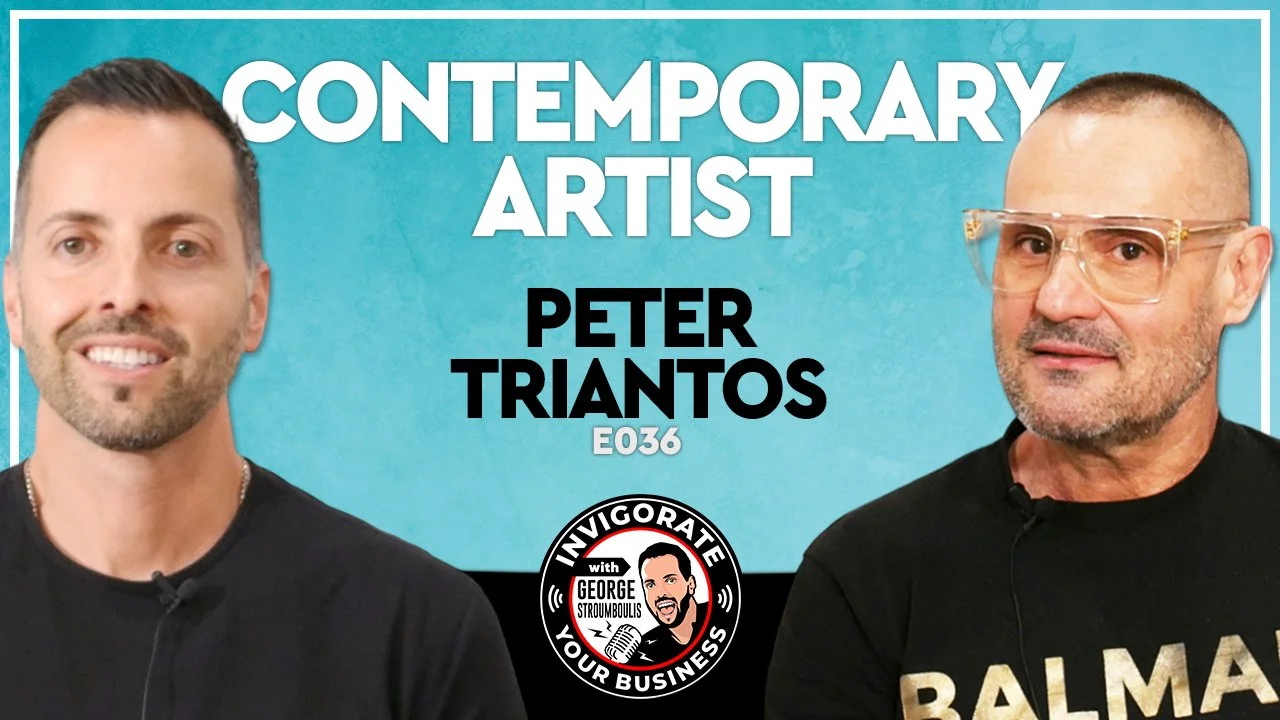
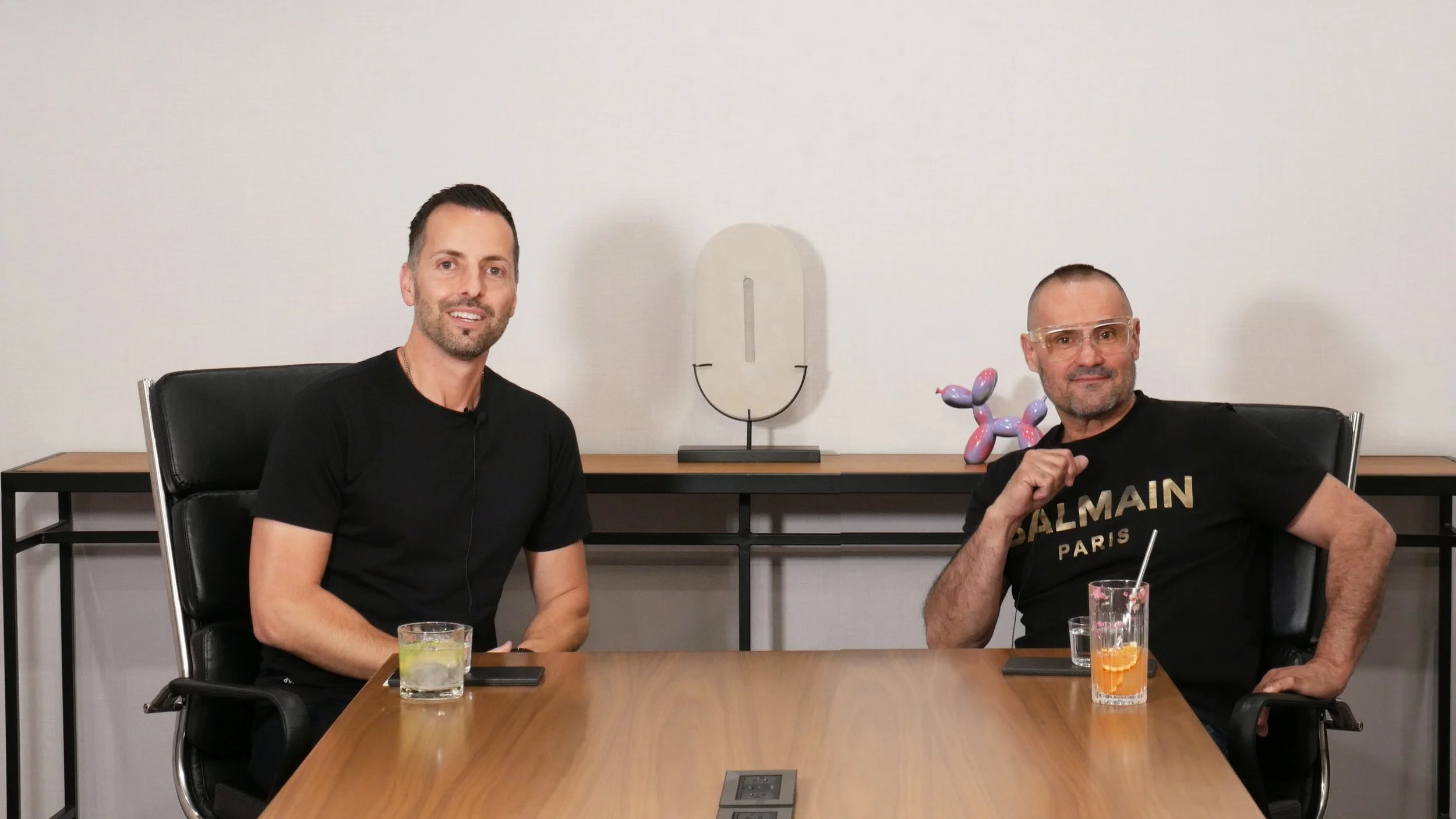
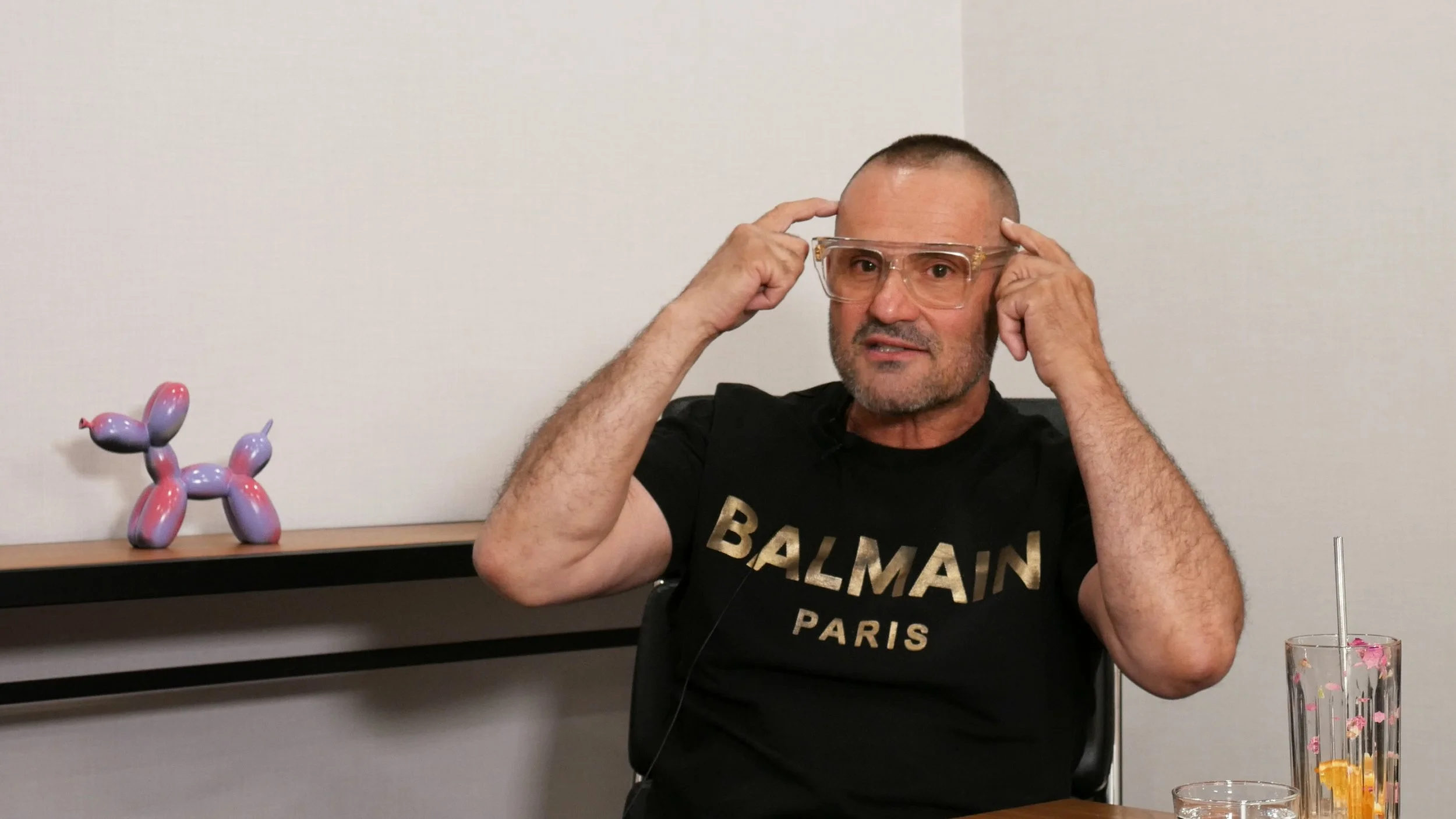
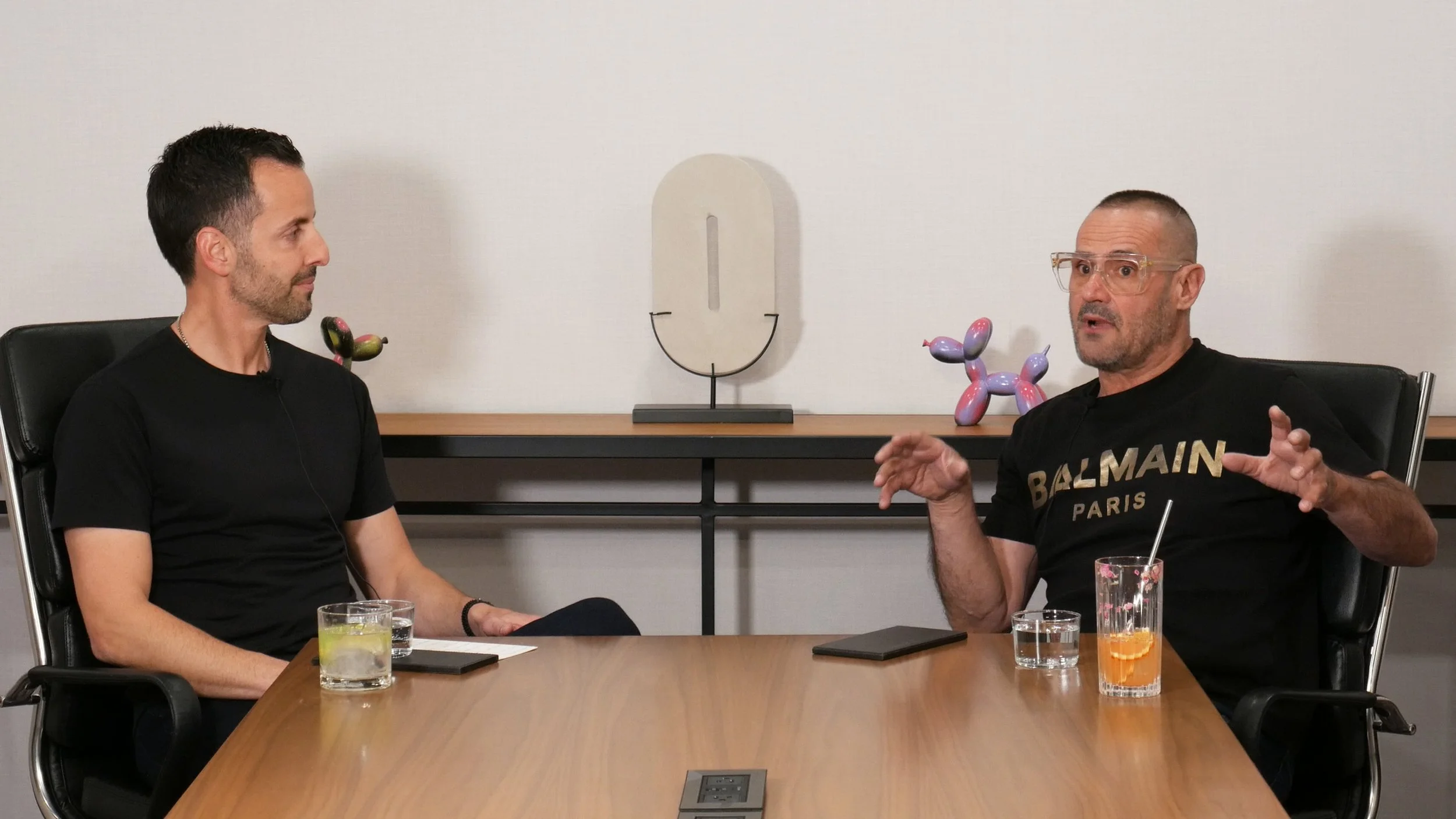
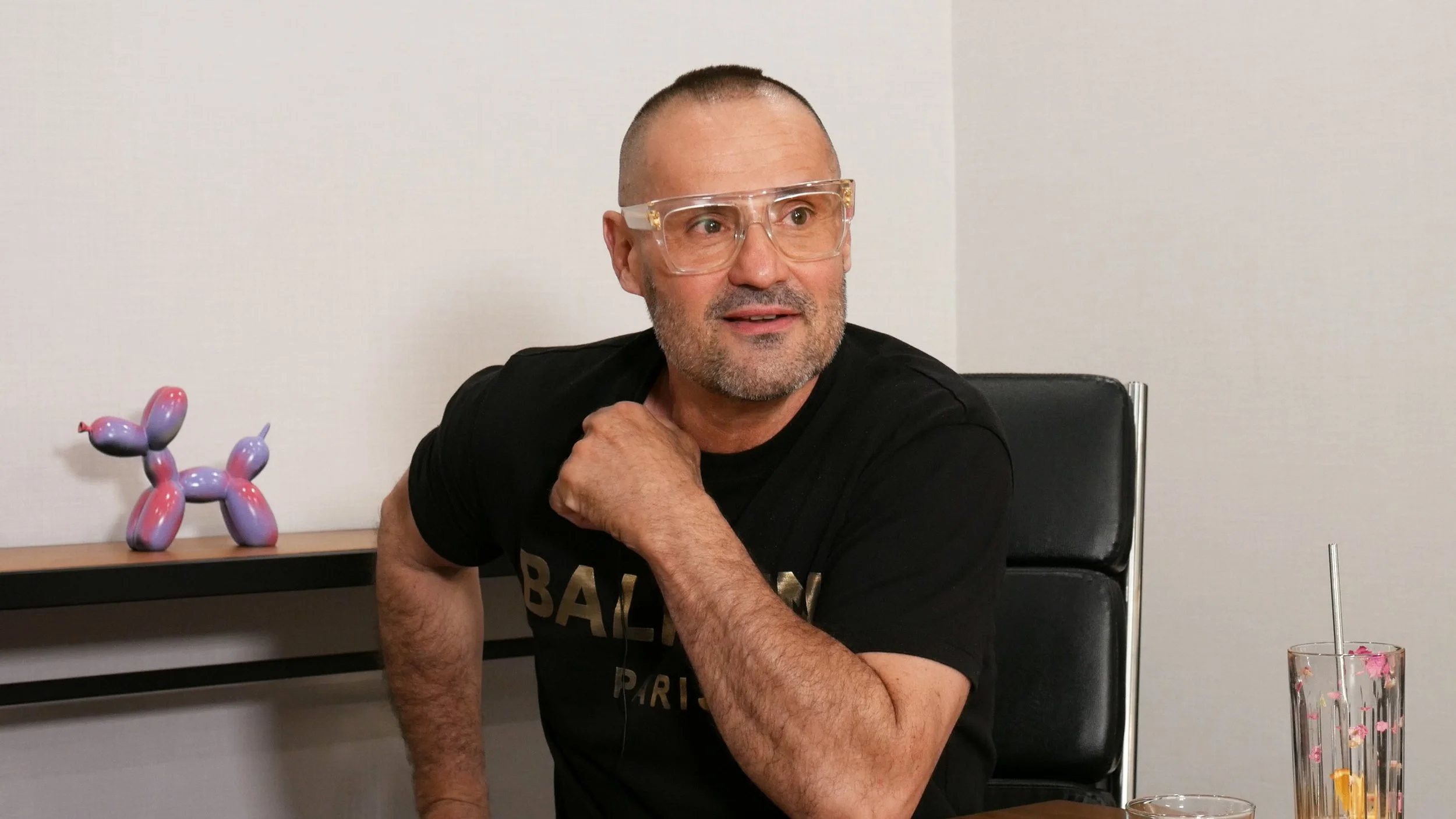
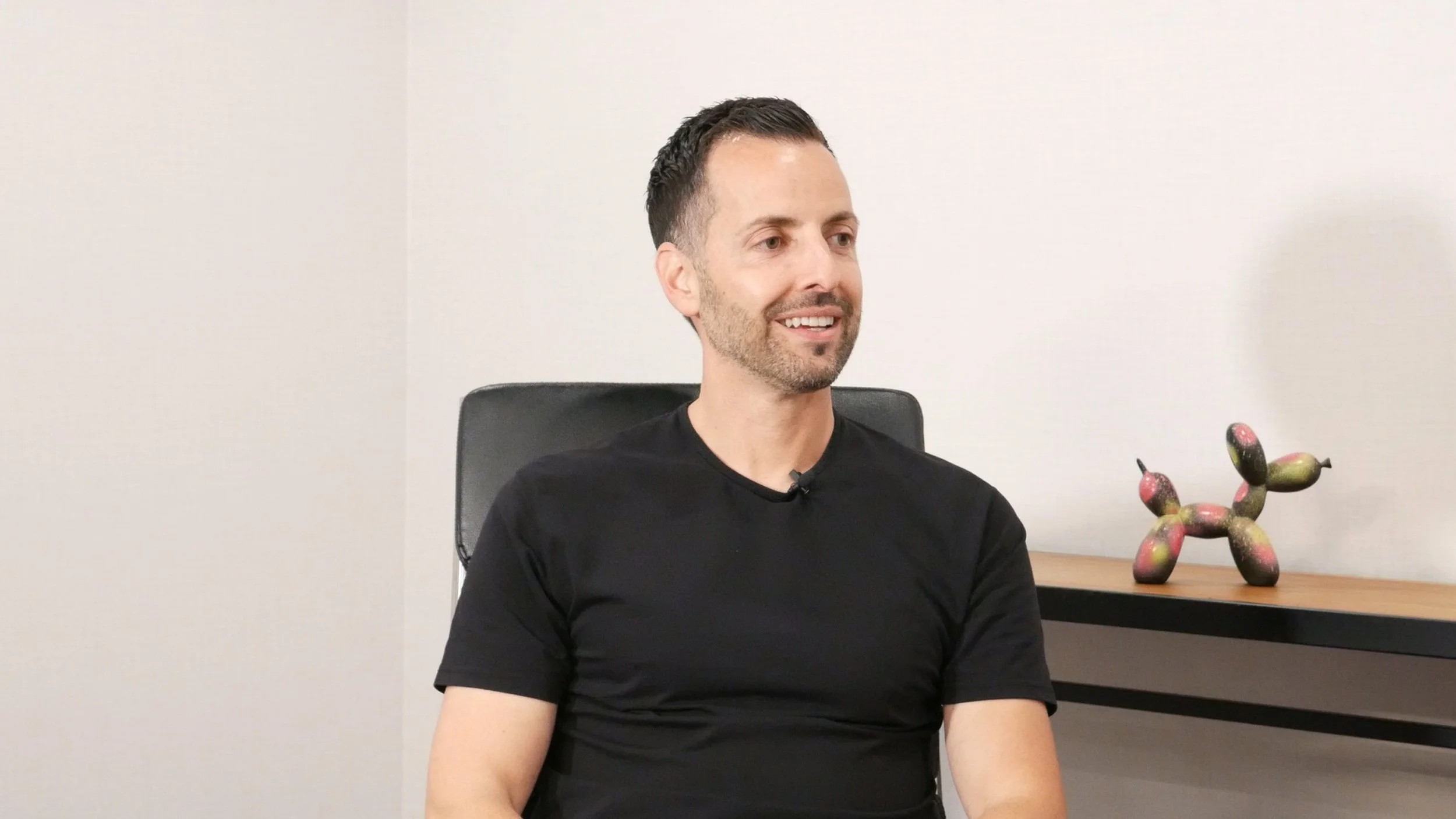

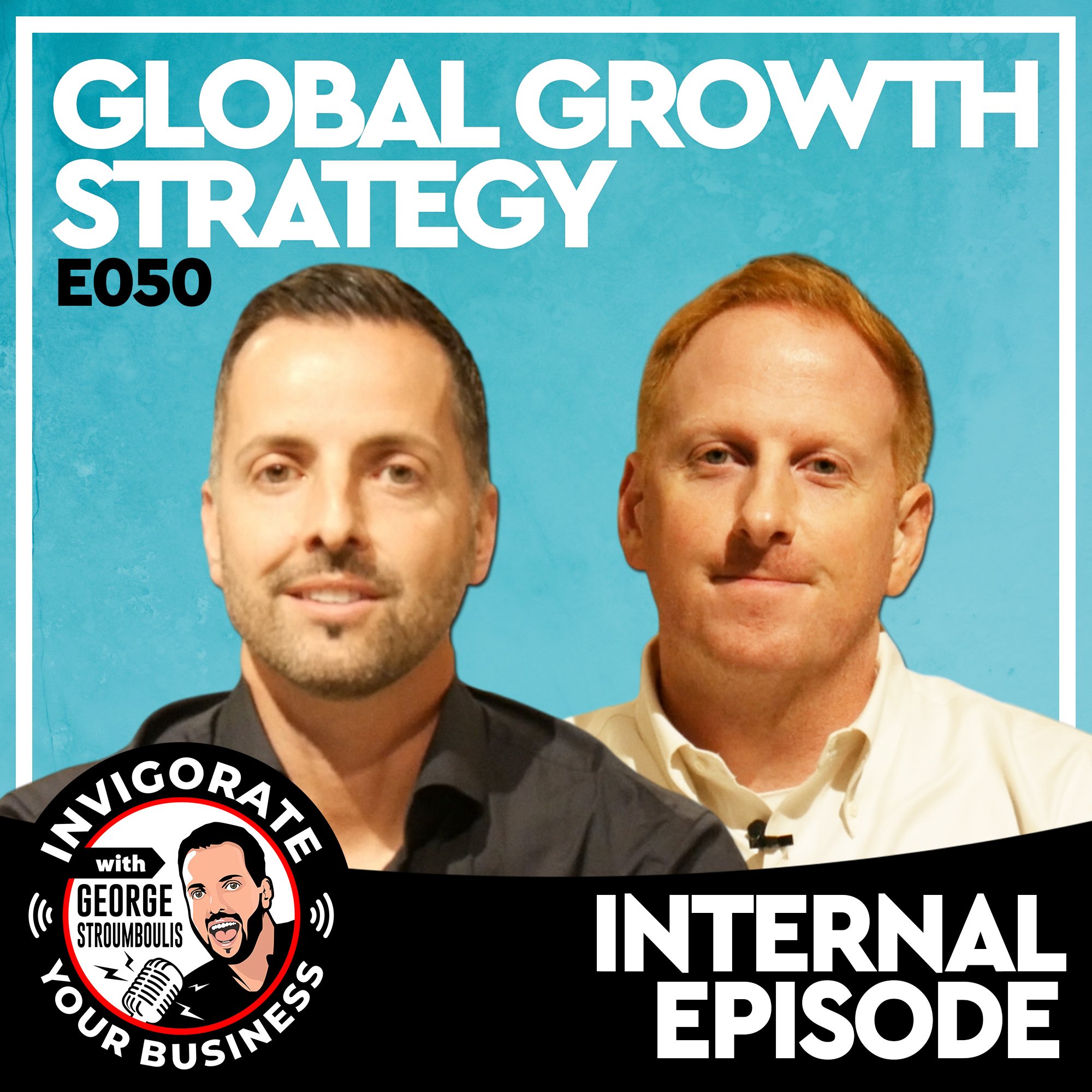





George Stroumboulis sits down with Thanasi Papoulias in Newport Beach, California on the Invigorate Your Business Podcast to talk about all things digital media, social media, influencing, online business strategies, celebrity interactions and so much more.